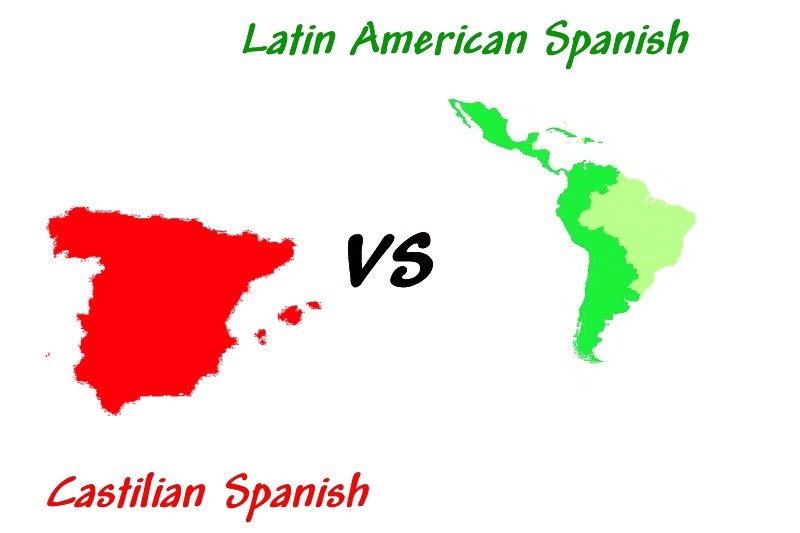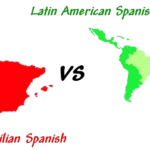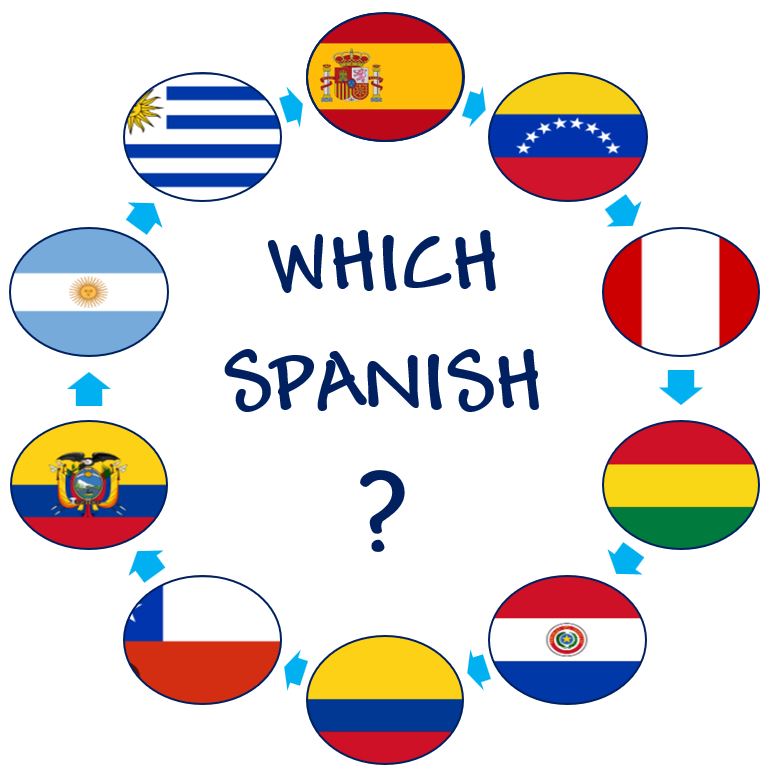
Which Version of Spanish Should You Learn? – Quick Answer
If you plan to travel to a Spanish speaking country, then you should learn the Spanish dialect of that country. If you are learning Spanish for any other reason, there may be more for you to consider before you choose a type of Spanish to learn.
Before you pick one type of Spanish to focus on, it might help if you understand why there are so many different kinds of Spanish in the first place.
“Did you know, as many as 20 countries have Spanish as their official national language and there are considered to be as many as ten different Spanish dialects”.
With so many different varieties of Spanish it can be confusing for someone who is just starting out in the language. You might ask yourself – Which Spanish should I learn? How many kinds of Spanish are there? What if I learn the wrong one? Well, don’t worry . . .
“Different kinds of Spanish are the same in many more ways than they are different. Whichever dialect you learn you’ll be ok.”
Which variety of Spanish you choose to learn will depend on your reason for learning Spanish in the first place. In this article I’ll take a look at some of the main differences between the Spanish spoken in different regions of the world.
I’ll point out some of the main things you need to watch out for. Hopefully, a quick read through this article will guide you towards choosing the right Spanish for you.
- Which Version of Spanish Should You Learn? – Quick Answer
- What Type of Spanish Is Most Common? – Where is Spanish Spoken?
- Why So Many Different Varieties of Spanish?
- What are The Different Dialects of Spanish?
- What Makes one Spanish Dialect Different to the Next?
- If there’s More than one Kind of Spanish, What Version Should I learn?
- How to Choose the Right Spanish for You
- Could I be Learning the Wrong Spanish?
- Frequently Asked Questions
- Related Posts
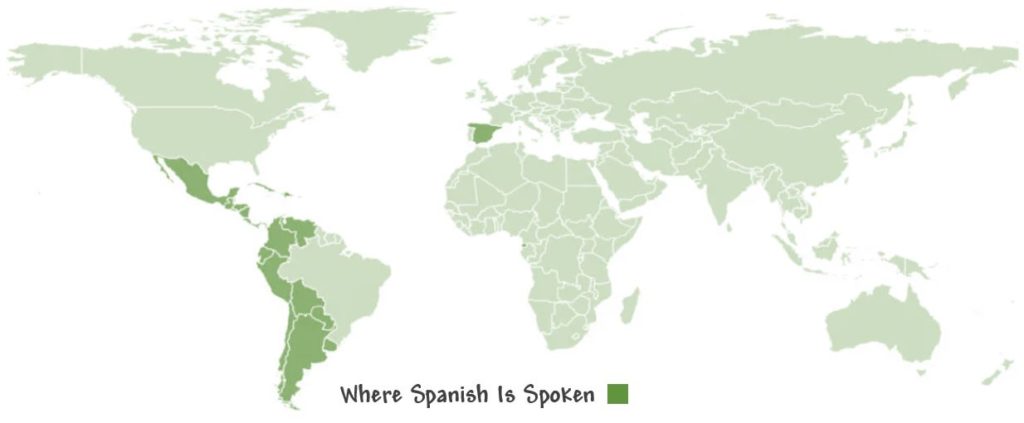
What Type of Spanish Is Most Common? – Where is Spanish Spoken?
If you were wondering which Spanish is most spoken in the world, then take a look at the table below. It might surprise you to see just how many people have Spanish as their first language.
| Country | Region | Spanish Speaking Population |
| Mexico | North America | 130 million |
| Colombia | South America | 50 million |
| Spain | Europe | 47 million |
| Argentina | South America | 44 million |
| United States | North America | 41 million |
| Peru | South America | 33 million |
| Venezuela | South America | 28 million |
| Chile | South America | 19 million |
| Guatemala | Central America | 18 million |
| Ecuador | South America | 17 million |
| Bolivia | South America | 12 million |
| Cuba | Caribbean | 11 million |
| Dominican Republic | Caribbean | 11 million |
| Honduras | Central America | 9 million |
| Paraguay | South America | 7 million |
| El Salvador | Central America | 6 million |
| Nicaragua | Central America | 6 million |
| Costa Rica | Central America | 5 million |
| Panama | Central America | 4 million |
| Puerto Rico | Caribbean | 3 million |
| Uruguay | South America | 3 million |
The numbers in the table above are just approximate and changing all the time. They still give a pretty good picture of where in the world Spanish is spoken. These are the countries where Spanish is an official language or is widely spoken.
There are many more countries, not on the list above where Spanish is spoken. In these countries Spanish is spoken as a second language or by significant minority populations.
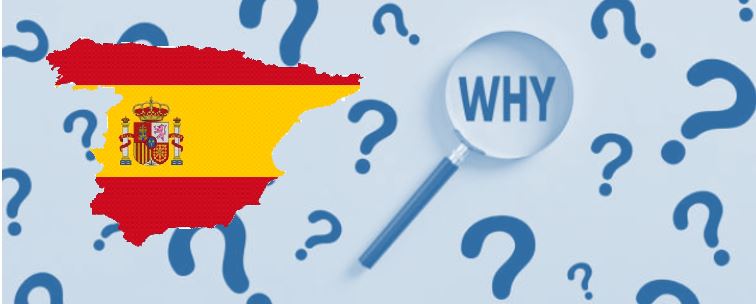
Why So Many Different Varieties of Spanish?
Well, the answer to this question lies in the history books. . .
What are The Different Dialects of Spanish?
In general, Spanish dialects will fall into one of the following three groups:
- Castilian Spanish, ‘Spain’ Spanish or Peninsular Spanish
- Latin American or South American Spanish
- Other Dialects
1. Castilian Spanish
Spain Spanish, Peninsular Spanish, or Castilian Spanish – which all mean the same thing by the way – the language of Spain, has a few different regional dialects.
The main dialect of Spain is Castilian which is spoken by most of the population and strongest in Northern and Central Spain. As well as Castilian other dialects include Murcian, spoken in the southeast, Andalusian, spoken in the south and Canarian, spoken on the Canary Islands.
In addition to these regional dialects there are some regions within Spain that have their own language. These languages are different to Spanish but mostly of Spanish origin. They include Basque, Extremaduran, Catalan and Galician.
2. Latin American Spanish
South America is certainly a lot bigger than Spain! It goes without saying that there are many more regional variations to the Spanish that is spoken in Latin America.
Although there are sub-dialects within each region, most can be categorised as being either – Latin American Spanish, Rioplatense Spanish or Caribbean Spanish.
Latin American Spanish can be found in most of the central and south American countries – Mexico, Bolivia, Peru, and Columbia for example.
Caribbean Spanish, as its’ name suggests, is spoken in the Caribbean region of South America. You’ll find it in eastern parts of Mexico, to the east of central America, in the Dominican Republic, in Puerto Rico and Cuba.
Rioplatense Spanish is the Spanish of Argentina and Uruguay.
3. Other Dialects
Outside of the Spanish Peninsula and South American Countries Spanish is also spoken in parts of the US, parts of Africa, the Philippines and Gibraltar.
What Makes one Spanish Dialect Different to the Next?
The main differences that will separate one dialect from the next can be seen when you compare:
If you compare the Spanish spoken in any two regions, even neighbouring towns within the same region, it is likely that you will find subtle differences. This holds true for any language – even English.
When comparing Spanish dialects, the most notable differences can be seen when you compare the Spanish spoken in South American countries to the Spanish spoken in Spain.
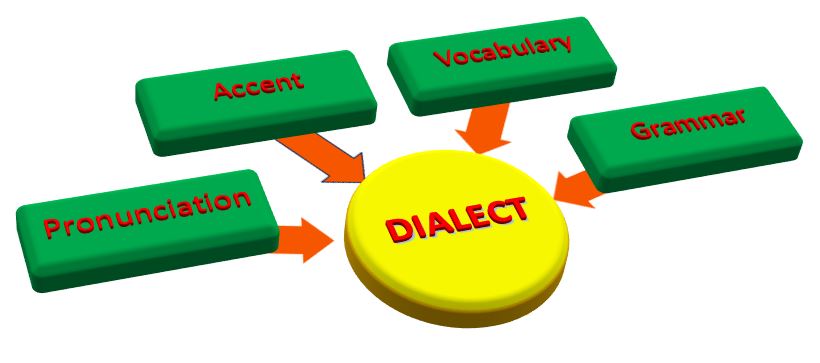
Accent
Since you are reading this as someone who speaks English you will know that people who speak English in different countries, and even different towns or cities in the same country, can speak with a different accent.
Compare someone from, let’s say, New York in the US for example to someone from London in the UK – they both speak the same English language but sound very different to one another when you hear them speak.
Spanish speakers in different parts of the world also speak and sound differently to one another. In fact, this is normal for every language anywhere in the world!
When learning Spanish this is something you need to watch out for. Even though someone might be speaking to you using Spanish words, phrases, and vocabulary that you have learned and fully understand, you may struggle to understand them simply because they sound differently to what you are used to.
If, for example, you learn Castilian (Spain) Spanish and are listening to someone from South America, or vice-versa, you need to be aware that although the language is the same it can sound very different. You will likely need to concentrate and listen more intently until you adjust to the different sounding accent.
This is not too difficult though as they are the same language after all. As a general guide many consider the Spanish of Northern Spain, Mexican Spanish, and Columbian Spanish to be the three ‘softer’ Spanish accents and just that bit easier to learn.
Pronunciation
Just like different countries have different accents they can also have different ways of pronouncing the exact same words and phrases. The following examples are a few to watch out for but you will find more of these as you learn and become more advanced in Spanish yourself.
The Spanish Lisp – In northern and central Spain (most of the country) the ‘s’ and ‘c’ and also ‘z’ are typically pronounced with a ‘th’ sound. An example of this would be the Spanish word for the number five, cinco – pronounced ‘thinko’ in Spain versus ‘sinko’ in most other regions.
Dropping the ‘S’ – Latin Americans tend to drop the ‘s’ sound at the end of many words. An example of this would be the Spanish for let’s go (or we go) vamos, which in south American countries would be pronounced vamo.
Double L ‘ll’ as ‘y’ and sometimes ‘sh’ – In Spain and most of Northern and Central America the double L (‘ll’) is pronounced as a ‘y’ sound. In Argentina the double ‘L’ and ‘y’ sound like ‘sh’. An example would be ‘quesadilla’ sounding like quesa-deeya in most regions, but an Argentine would say quesa-deesha.
Grammar – Castilian vs Latin American Spanish
Although grammar differences vary throughout the Spanish speaking world the most notable ones to watch out for are found when you compare Castilian Spanish to Latin American Spanish. I talk about this in much more detail in another article where I compare the main differences between Castilian and Latin American Spanish.
Let’s take a quick look at some of the main grammar points to watch out for.
Usted/Tú/Vos
Usted, tú and vos are three ways to say ‘you’ in the singular person in Spanish. In Spain the more informal ‘tú‘ is used most often, in most of South America the more polite ‘usted‘ is used and in a few of the Southeren cone countries (Argentina, Chile, Uruagy) they tend to use vos. In grammar the use of ‘vos‘ is known as voseo.
Vostros/Ustedes
Just like the singular version of ‘you’ differs between Spain and Latin America, the way that ‘you’ plural is formed is also different. In Latin American countries ustedes is used, but in Spain it’smostly vostros.
Leísmo
Le(s) vs La(s) or Lo(s) – As the direct object pronoun Spanish people tend to use le(s) but Latin Americans use la(s)/lo(s). This is known as leísmo.
Vocabulary
Earlier when we talked about why there are so many Spanish dialects, we mentioned how Spanish took influence from the local language and culture of each new region it spread to. One of these influences was the addition of entirely new words to the vocabulary.
This is one of the reasons you will find quite a few words in the Spanish of Latin America that simply do not exist at all in the Spanish of Spain.
The opposite is also true – there are words found in the Spanish vocabulary of Spain that you just won’t find across the Atlantic in South America. Some of these words can be credited to the influence that English has had on Spanish in Europe.
There are many more, but these are just a few common examples of vocabulary differences you will find.
| In Latin America | In Spain | English |
| Carro | Coche | Car |
| Celular | Móvil | Phone |
| Plata | Dinero | Money |
| Pluma | Bolígrafo | Pen |
| Manejar | Conducir | To Drive |
| Jugo | Zumo | Juice |
If there’s More than one Kind of Spanish, What Version Should I learn?
Now that we know there are many different types of Spanish, how do we get past the confusion and pick the right one to learn? The first and most important thing to consider is what part of the world you will eventually be speaking Spanish in.
Whichever country (or countries) you are most likely to be speaking Spanish in will have the biggest influence on which version of Spanish you should learn.
Although there are many different flavours of Spanish around the world, most dialects can be categorized as being one of either a ‘European Spanish’ dialect or ‘South American Spanish’ dialect. There are others for sure but most fall into one of these two categories.
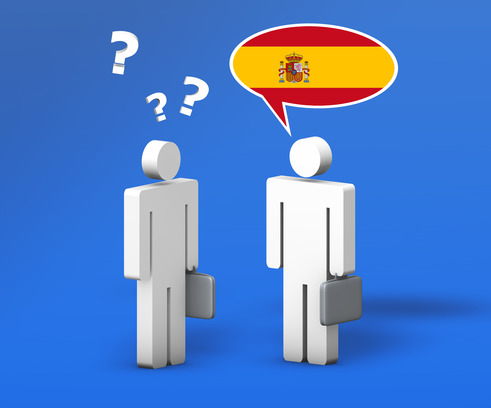
How to Choose the Right Spanish for You
Here’s a few simple pointers to help guide you:
Video – Which Spanish Should I Learn?
If you have read this far you now know that there are many different Spanish dialects to choose from. You will need to watch out for differences in accent, pronunciation, grammar, and vocabulary depending on where you go.
How do you choose a dialect? The real answer is that it doesn’t matter which one you Learn.
By the time you have got past the basics and have learned enough Spanish to notice and appreciate any differences in dialect you might encounter, you will likely also already have the skill to navigate these differences without difficulty.
Could I be Learning the Wrong Spanish?
I’ve said it already but “Different kinds of Spanish are the same in many more ways than they are different”. It’s not really possible to learn the wrong form of Spanish.
Although it’s not a huge deal which type of Spanish you end up learning it does make sense to focus on the dialect you are most likely to use and encounter when you eventually put your Spanish into practise.
If you have been stressing out about which type of Spanish you should learn, or even worried that you have been learning the wrong one then we hope this guide has put your mind at ease.
In truth, it’s impossible to learn the wrong type of Spanish!
Frequently Asked Questions
Here are some quick answers to the most common questions people ask about which form of Spanish they should learn.
Related Posts
Spanish For Beginners – How to Get Started With Spanish
Castilian vs Latin American Spanish – What’s the Difference?
Can You Really Learn Spanish Free Online?
For more great tips and ideas to help you learn Spanish why not visit our HOME Page or check out the Related Posts section above
- What Type of Spanish Should I Learn – Which Dialect? - September 20, 2023
- Spanish Dialects – How Many Types of Spanish are There? - September 20, 2023
- Castilian vs Latin American Spanish – What’s the Difference? - September 20, 2023

